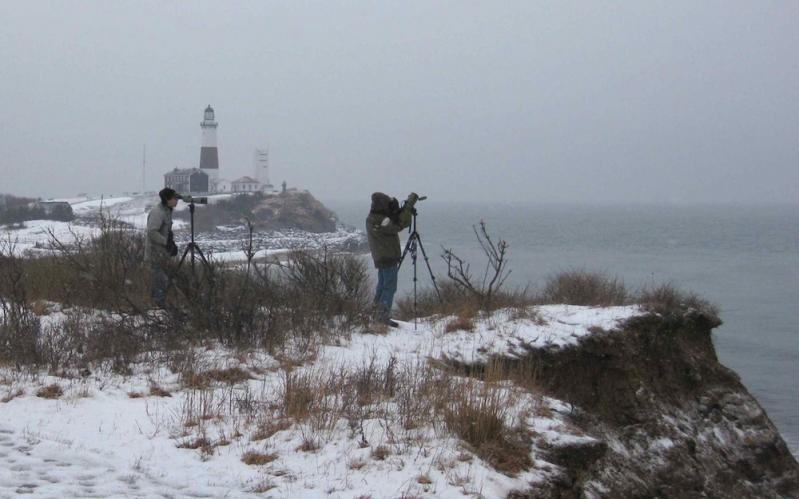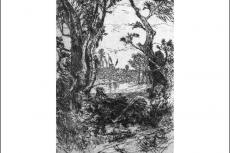When Frank Chapman, the noted ornithologist, gathered fellow birders for the first Christmas Bird Count in New York City in the year 1900, the goal was to discourage “side hunts” — in which people would shoot as many birds as they could in a day for sport — and to encourage simply counting them instead of killing them.
Today, bird counts are more about taking a census of the skies and the natural environment.
The first Montauk Christmas Bird Count was in 1938, and though there were a couple of wartime years when it did not take place, it is one of the oldest annual bird counts still running, according to Brent Bomkamp, one of the coordinators of this year’s event.
“In terms of the big-picture ‘why,’ it’s actually really valuable data,” he said in an interview. “The original count was founded not with this purpose, but at this point the Christmas Bird Count is invaluable citizen-scientist data. You feel like you’re contributing good work.”
“Citizen science” is the act of observing, recording, and sharing data by nature enthusiasts. The practice is popular not just among birders, but also among astronomers and weather watchers. One of the most common acts of citizen science regionally is the water quality testing carried out by volunteers for groups like Concerned Citizens of Montauk and the Surfrider Foundation.
Mr. Chapman, who wrote many field guides, was the founder of Bird-Lore, a publication that eventually became Audubon magazine. Today, the National Audubon Society publishes the magazine and is the administrator and recipient of Christmas Bird Count data gathered across the country.
In September, the journal Science published an alarming study showing that human activity in North America since 1970 has devastated bird populations, by as much as one-quarter of all species. The National Audubon Society declared “a bird emergency” after the study’s release.
“The connection between birds and humans is undeniable — we share the same fate,” David Yarnold, president and C.E.O. of the Audubon Society, said in a statement. “This is a bird emergency with a clear message: The natural world humans depend on is being paved, logged, eroded, and polluted. You don’t need to look hard for the metaphor: Birds are the canaries in the coal mine that is the earth’s future.”
This year’s Montauk Christmas Bird Count will be on Saturday, nearly all day. Mr. Bomkamp said it could benefit from a few more volunteers willing to hike around Montauk, as far west as Accabonac Harbor. Those who are interested in signing up can email him at [email protected]. About 42 people have signed up so far, coming from as far as Westchester County and New York City.
The count can also accept data from people who wish to count the birds visiting the feeders they may have at their houses or in their yards.
The group will begin before dawn, around 4 a.m., to observe owls. Three species can be seen in this region at this time of year: the great horned owl, the eastern screech owl, and the northern saw-whet owl, which is just six to eight inches tall.
Each volunteer birder will need a pair of binoculars and a notepad and pen (and warm clothes and shoes too, given the time of year). Cameras are optional. Mr. Bomkamp explained that the group will split into five teams of observers to cover territories that span 7.5 miles in total. They’ll have to be quiet, of course, as they make their way throughout the shores, parks, and wooded areas. Counting, and avoiding double counting, can be challenging. “Birds will tend to avoid you,” Mr. Bomkamp said. “You just try to be very quiet and walk slowly and listen. One of the big ways we get birds to come out is by making squeaking noises. Birds are very inquisitive to that.”
Even though Montauk “is not favorable to birds” this time of year, some unusual ones have been spotted over the years, including a great skua, which is native to Europe, and an ash-throated flycatcher, a western species that usually winters in Mexico.
Mr. Bomkamp said the annual bird count is also about camaraderie, a fun tradition among those who like birds.
“You really feel like you’re contributing. Every bird really matters in this count,” he said. “On a daily basis you might be looking for something rare or beautiful, but in this one, every one makes a difference. That’s the most important thing about the count — you appreciate every bird you get.”




